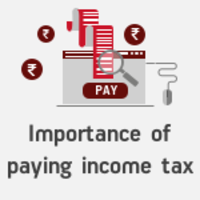Facts About Tax As Distinguished From License Fee Revealed
Wiki Article
Tax Avoidance Meaning Things To Know Before You Get This
Table of ContentsThe Greatest Guide To TaxonomyTaxonomy for BeginnersGet This Report about Tax AvoidanceNot known Facts About Tax AccountingTax Avoidance Can Be Fun For AnyoneSome Known Facts About Taxonomy.Not known Incorrect Statements About Tax Amnesty
Tax has actually come to be a reputational issue. Exterior stakeholders such as the media, civil culture organisations, government and the public at huge are showing a passion in a business's tax obligation events including its approach, and the quantity of tax obligation that it pays. Workers are additionally thinking about understanding even more regarding their employer's setting on tax obligation.Tax obligation as well as its impact on business online reputation is a crucial business problem. What complies with is a summary of 4 of the locations where we function with customers to assist enhance their transparency around tax in a nationwide context, as well as worldwide. This is with a sight to urging a far better understanding of the Overall Tax Obligation Payment that they make, and also to guarantee that this is connected in an appropriate method.
Apr 8, 2021 Pay-roll taxes fund government-mandated insurance programs including Social Protection and Medicare and are the second-largest resource of incomes for the federal government. In 2019, the most recent year for which data were not affected by short-lived distortions resulting from the pandemic, pay-roll taxes made up 36 percent of overall government earnings.
The Ultimate Guide To Tax As Distinguished From License Fee

When the tax dedicated to Social Safety and security was very first executed in 1937, it was capped by law at the initial $3,000 of revenues (which would certainly be equal to around $56,000 in 2021 bucks). Given that 1975, the taxable maximum has generally been raised annually based upon an index of national ordinary incomes.
Economists consider the Social Protection tax obligation to be regressive, since as an individual's revenues increase over the cap, the part of total revenues that is strained reductions. Arguments For and also Versus the Social Security Tax Cap Proponents of increasing or eliminating the limit on incomes based on the Social Safety and security pay-roll tax obligation argue that it would certainly make the tax much less regressive as well as belong to a service to enhance the Social Security trust funds.
The smart Trick of Taxonomy That Nobody is Discussing
One more debate is that getting rid of the taxed maximum would certainly change for the truth that higher-income individuals generally have longer life span and also thus obtain Social Protection benefits for a greater quantity of time. Challengers suggest that increasing or getting rid of the taxed maximum would certainly deteriorate the web link between the quantity individuals pay in Social Safety and security taxes and also the amount they obtain in retired life benefits.Those challengers mention programs that have actually been created to at the very least partly counter the regressive nature of the Social Protection payroll tax obligation. Some economists expect that if the limit were lifted, employers may respond by changing taxed payment to a kind of payment that is taxed at a reduced price.
In spite of that resemblance, there is much variation in exactly how other OECD nations enforce pay-roll taxes on their residents. Countries such as the Netherlands, Sweden, Germany, as well as Canada have caps on taxable revenues that are less than in the United States; others, such as Norway and also Ireland, tax all earnings. Normally, countries with higher payroll tax obligation prices have lower caps, while nations with reduced pay-roll tax obligation prices, like the USA, tend to have higher caps or no caps in all.
All about Tax Amnesty Meaning
Certain countries, like the United Kingdom and Austria, have a bracketed pay-roll tax framework that levies the payroll tax at different prices depending upon complete earnings, comparable to exactly how the USA levies income tax obligations. In the UK, that bracketed system is regressive in framework, while in Austria it is progressive.

That superefficient tax obligation is a head tax obligation, by which all individuals are exhausted the same quantity, no matter revenue or any kind of various other specific qualities. A head tax obligation would certainly not lower the incentive to work, save, or spend. The issue with such a tax, however, is that it would certainly take the very same quantity from a high-income person as from a low-income individual.
Some Of Tax Amnesty Meaning
And even a head tax obligation would certainly misshape people's options somewhat, by providing them a motivation to have less children, to live and work in the below ground economic climate, and even to emigrate. Within the realm of what is sensible, the objective of effectiveness is to decrease the methods in which taxes impact individuals's options.Fairness, to most individuals, calls for that similarly based taxpayers pay equal tax obligations ("straight equity") which better-off taxpayers pay even more tax ("upright equity"). Although these objectives visit this site appear clear enough, fairness is quite in the eye of the beholder. There is little arrangement over just how to judge whether 2 taxpayers are similarly located.
And also also if one taxpayer is plainly better off than an additional, there is little contract about how a lot more the better-off person read here need to pay. Lots of people believe that justness determines that tax obligations be "modern," meaning that higher-income taxpayers pay not just a lot more, yet additionally proportionately a lot more. A significant minority takes the position that tax rates ought to be flat, with everybody paying the exact same percentage of their taxable income.
The Of Tax Avoidance And Tax Evasion
Economists that think that income tax obligations highly reduce motivations to function or conserve, and economic experts who believe that typical households already are unfairly strained by hefty tax obligations, may stand up to tax obligation increases that would certainly move the federal budget plan towards equilibrium. Also, other goals of tax obligation policy conflict with each other - tax amnesty. High tax rates for upper-income families are ineffective however are judged by some to make the tax system fairer.The company earnings tax obligation was the resource of practically a third of total income at the beginning of the period, yet it has actually decreased drastically to under 10 percent today. In mirror image, the pay-roll tax obligation for started at just under 10 have a peek at this website percent of complete profits however boosted greatly to around 40 percent as the senior as well as -changed Social Safety and security advantages expanded and as the Medicare program was included in the system.
The increase in state as well as neighborhood taxes has added to the taxpayers' burden as well as has restricted the federal government's ability to reduce the federal deficiency and to raise spending.
The Facts About Tax Avoidance Revealed
This legislation, like the 1981 regulation, also substantially reduced revenue tax obligation rates. It was, nonetheless, substantially different from the 1981 tax cuts in an extra significant feeling, in that all of the tax rate cuts were "spent for" by the removal of tax obligation incentivesincluding the remaining company investment temptations from 1981.Report this wiki page